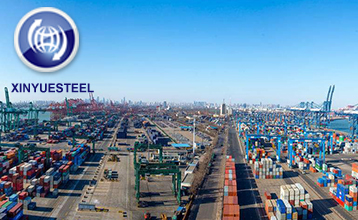Port inventory continues to run at a low level, there is no market for coal in the market
Dec. 22, 2020
In terms of ports, the recent low inventory of Beigang has not changed, and the market is still in short supply of high-quality resources. my country’s Bohai Rim ports have a total of 18.17 million tons of coal, a decrease of 420,000 tons from a week ago. Imported coal has been relaxed, and some new foreign coals have gradually entered the domestic market. However, due to strong downstream demand, the entry of a small amount of imported coal has limited relief to the tight supply pattern of the domestic coal market. It is expected that domestic coal prices will still be supported in the short term.
Towards the end of the year, the safety inspection of the production area was strict. The coal mines whose annual production tasks were completed began to reduce production and suspend production to ensure safety, and the production capacity was further contracted. However, the number of coal-pulling vehicles continued to increase and coal supply was relatively limited. In the first half of the month, coal prices in various production areas increased by 80%. -115 yuan / ton range, is still continuing the upward trend. At the same time, users in the south have continued to be enthusiastic about purchasing and pulling shipments. The inventory of northern ports has continued to be low, and the effect of accumulating warehouses has not been as expected; the overall supply of coastal coal markets has been tight, and quotations have continued to rise.

This week (December 14-20), the number of anchor ships in northern ports continued to increase. At present, the top ten coal transportation ports in the Bohai Rim have anchored as many as 205 ships, an increase of 20 from a week ago. Most of the coal-pulling ships are maintaining the long-term coal transportation, while a small amount of coal is traded in the high-priced market, and the spot price is operating in the high range and rising slightly. On the downstream side, during the peak season for coal use, power plant inventories are low year-on-year, while consumption is accelerating. It is expected that the number of days available for coal storage in power plants will continue to decrease; it is expected that the market will continue to increase pressure to ensure supply in the second half of this month and January next year. From the perspective of coal storage in Bohai Rim ports, high-quality low-sulfur coal continues to be in short supply, traders are reluctant to sell their goods, and the structural shortage of the market is difficult to change in a short time. In addition, the port inventory in Jiangnei has also reached historical lows, the market has fewer resources available for sale, and the market coal quotations are chaotic; driven by the high quotations, actual transactions are limited and there is no market.
Since the beginning of winter, as the cold air hits again, the country’s temperature has dropped significantly, and the daily consumption of power plants has shown a seasonal rebound; coupled with the accelerated economic recovery, my country’s secondary industry power demand has achieved rapid growth, key projects have accelerated, and economic vitality has been heated. constantly improving. While hydropower has weakened, UHV power transmission has decreased, demand for coal-fired electricity in coastal areas has continued to increase, and the market has been more active in replenishing storage. In addition, the non-electricity industry is still in its peak production period, user inventory consumption is accelerating, and the demand for replenishment of power plants continues to be released. At the same time, the inventory of key power plants has declined at a high level. Under the overall market supply and demand pattern of internal and external shortages, domestic coal prices continue to be strong.
Recently, electricity companies have issued price-limiting purchases and power-limiting policies in some regions. The sentiments and operations of all parties are more cautious. The follow-up market needs to pay attention to the policy side and actual supply and demand conditions, as well as the impact on prices.



